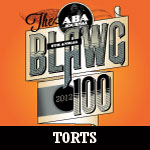Today,
Abnormal Use continues its series, “Abnormal Interviews,” in which this site will conduct brief interviews with law professors, practitioners and other commentators in the field. For the latest installment, we turn to law professor
David G. Owen of the University of South Carolina School of Law. Renowned for his scholarship in products liability law, Professor Owen co-authored the products liability treatise,
Madden & Owen on Products Liability (with S. Madden and
M. Davis). The interview is as follows:
1. What is the most significant new development in products liability in recent years?
The most significant development in products liability doctrine is the continuing decline of “strict” products liability. The rise of strict liability occasioned by Judge Traynor’s decision in Greenman v. Yuba Power Products, Inc. in California in 1963 and the ALI’s adoption of § 402A of the Restatement (2d) of Torts in 1964 (published in 1965) fueled the spectacular development of modern products liability law. The idea was that the law demands safe products, and manufacturers and other sellers of defective products should pay for accidents such products cause.
Beginning in the mid-1980s, however, courts began to rethink the idea of strict liability as they began to parse the concept of “defect” according to whether a product danger was a manufacturing flaw, a danger in design, or a danger not adequately warned about. And as the law developed, spurred by the Restatement (3d) of Torts: Products Liability during the 1990s, it became more and more clear that the law would tolerate true “strict” liability only in cases of manufacturing flaws. In state after state, negligence principles (and in some states negligence doctrine) reclaimed center place in judging both design and warning safety, with design safety increasingly turning on the availability of a feasible alternative design the manufacturer unreasonably failed to adopt, and warning safety increasingly turning on the foreseeability of a danger about which the manufacturer unreasonably failed to warn.
This development—away from strict liability and back toward negligence principles—continues to spread across the land, sometimes with a state’s adoption of a defense to “strict” liability based on “state of the art,” and other times with a court’s or legislature’s switch from a design defect liability test based on consumer safety expectations to a risk-utility test based on a manufacturer’s failure to adopt a reasonable design precaution. As for this latter switch, the most recent example is the South Carolina Supreme Court decision in Branham v. Ford Motor Co., just a couple months ago.
2. What rule of modern products liability jurisprudence is the most outdated? How would you change it and why?
Putting aside the decline of “strict” liability in design and warning cases just discussed, products liability law has a number of secondary rules that deserve reconsideration. Near the top of this list is the “learned intermediary doctrine,” applicable in prescription drug cases. Normally, a manufacturer has a duty to provide warnings directly to persons who need the warnings the most, usually end users. But the widely applied learned intermediary doctrine provides an exception to this duty rule for prescription drugs, based on the belief that doctors—learned intermediaries situated between drug manufacturers and patients—can best process drug warnings and decide when and how to pass along to patients those that are most relevant to particular patients. So, this rule provides that manufacturers only have to warn doctors about dangers in their drugs, and that they have no duty to provide warnings directly to the patients who will consumer their drugs.
In this day of mass merchandising of prescription drugs in the media, where drug manufacturers have chosen to jump over doctors and market their drugs directly to patients, it seems that manufacturers logically should have a corresponding duty to supply warnings of dangers directly to patients, too. Courts in New Jersey and West Virginia have so held in recent years, and I predict that other courts will reasonably follow suit—and abandon the learned intermediary doctrine—in the years ahead. Moreover, I would like Congress or the FDA to require manufacturers to provide patient warning inserts with all prescription drugs, written by public health professionals and reviewed by the FDA to assure effective translation of complex scientific medical information to a comprehensible form for ordinary patients. Finally, I would abolish the pharmacist’s immunity from liability for failing to warn and require pharmacists, as well as manufacturers, to provide patient warning sheets with all prescription drugs they sell.
3. What is the biggest challenge for lawyers practicing products liability today? What advice would you give?
The biggest challenge for products liability lawyers today concerns the use and abuse of expert witnesses and the lessons of Daubert v. Merrell Dow Pharmaceuticals, decided by the Supreme Court in 1993. The purpose of Daubert was to rid courtrooms of “junk science”— questionable scientific testimony often allowed into evidence by judges who felt uncomfortable evaluating the reliability of such testimony, evaluations they traditionally could avoid by uttering the mantra that any weaknesses in such testimony went merely to its weight, not its admissibility. Interpreting Federal Rule of Evidence 702, Daubert ruled that modern judges now must serve as scientific “gatekeepers,” keeping out scientific testimony that is not “reliable.” Now applied to expert testimony on technology as well as science, Daubert spans all products liability litigation in federal court; and its principles are rapidly spreading to state court litigation, too.
After Daubert, the challenge for products liability lawyers—many of whom went to law school because of an aversion for science and technology—is to realize that they can no longer leave science (and technology) to their experts, and that the lawyers themselves now have to bite the bullet and learn the science their experts preach. In addition, lawyers now need to “Daubertize” their expert witnesses by requiring their witnesses to rigorously apply reliable principles of science and technology to their research and testimony in a products liability case, and to clearly explain their reasoning—on how a product was defective, on how the defect caused the plaintiff’s accident/illness, and precisely how the product practicably could have been made differently to prevent the accident/illness.
Lawyers, in short, now need to know their science and technology in a case well enough to guide their own experts to be able to explain how they arrived at their conclusions, step by step, so that the expert’s reasoning process is transparent and, therefore, subject to effective cross examination by opposing counsel. This is no small task, and lawyers will continue to be challenged fresh in every new products liability case with learning the scientific or technological details of the “how” and “why” a particular product failed. This is a challenge that has made products liability litigation more difficult and more expensive, with the result that plaintiff’s lawyers are trying fewer products liability cases today than they did a couple decades in the past. By the same token, however, plaintiffs today are preparing themselves and their experts more thoroughly than in olden days, with the result that they are winning a higher percentage of cases, and receiving higher verdicts, than before Daubert marched across the land.
BIOGRAPHY: David Owen is the Carolina Distinguished Professor of Law and Director of the Office of Tort Law Studies at the University of South Carolina where he teaches courses and seminars on Tort Law, Tort Theory, and Products Liability. Prior to teaching, Professor Owen received degrees in economics (Wharton) and law from the University of Pennsylvania, was law clerk for Chief Justice Kenison of New Hampshire, and practiced law at Holland & Hart in Denver. In addition to numerous journal articles, Professor Owen has authored, co-authored, and edited various books, including a hornbook/treatise, Products Liability Law; Products Liability in a Nutshell; the leading casebook, Products Liability and Safety (with J. Montgomery and M. Davis); a products liability treatise, Madden & Owen on Products Liability (with S. Madden and M. Davis); a theoretical work, Philosophical Foundations of Tort Law; and Prosser & Keeton on Tort Law (with W. Prosser, P. Keeton, R. Keeton, and D. Dobbs). He is an Adviser to the American Law Institute on the Restatement (Third) of Torts, and he was the ALI’s Editorial Adviser for the Restatement of Products Liability.
 No, it is not quite July yet — even though I truly wish it was with all this cold weather the past couple of weeks in South Carolina — the Consumer Product Safety Commission (“CPSC”) is already anticipating next July. On December 8, 2010, the CPSC announced that four fireworks firms agreed to pay a $100,000 civil penalty for importing violative fireworks. The entire agreement can be viewed here [PDF].
No, it is not quite July yet — even though I truly wish it was with all this cold weather the past couple of weeks in South Carolina — the Consumer Product Safety Commission (“CPSC”) is already anticipating next July. On December 8, 2010, the CPSC announced that four fireworks firms agreed to pay a $100,000 civil penalty for importing violative fireworks. The entire agreement can be viewed here [PDF].














